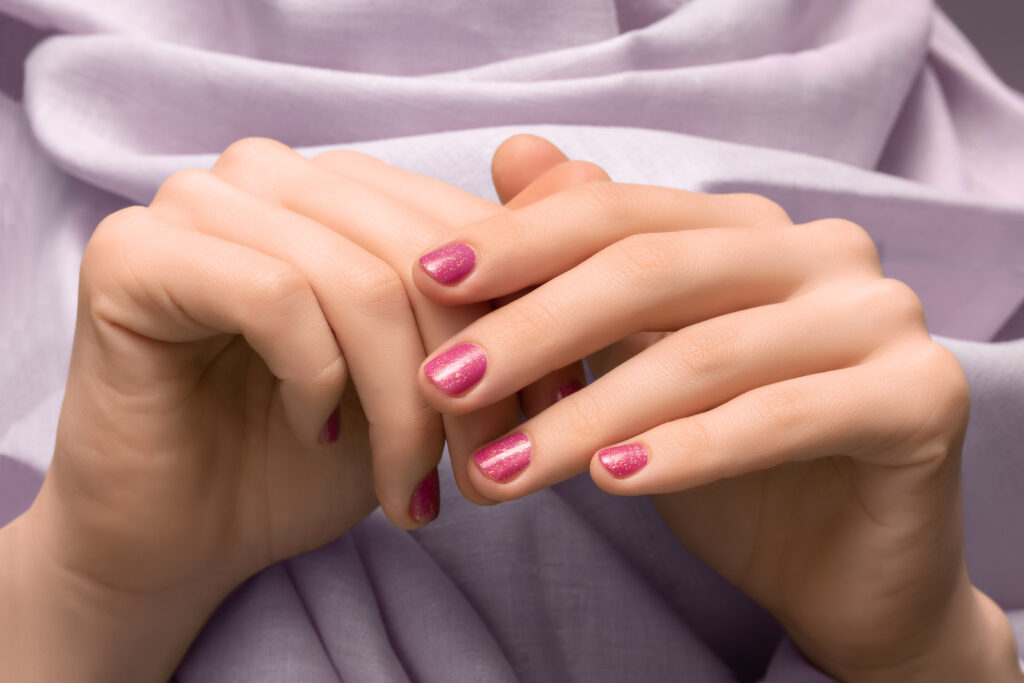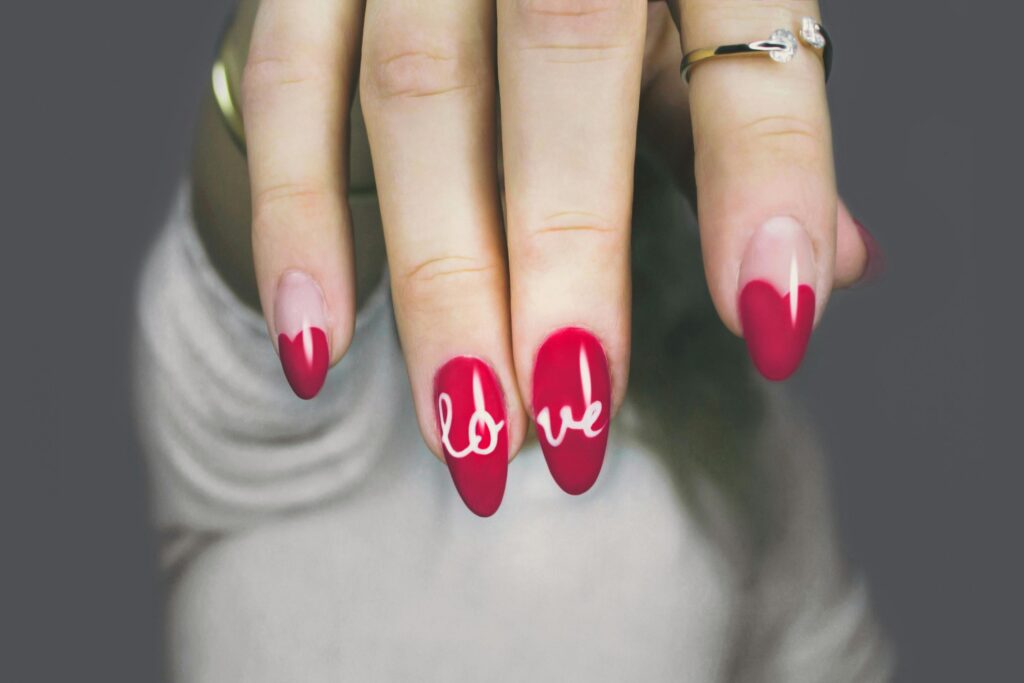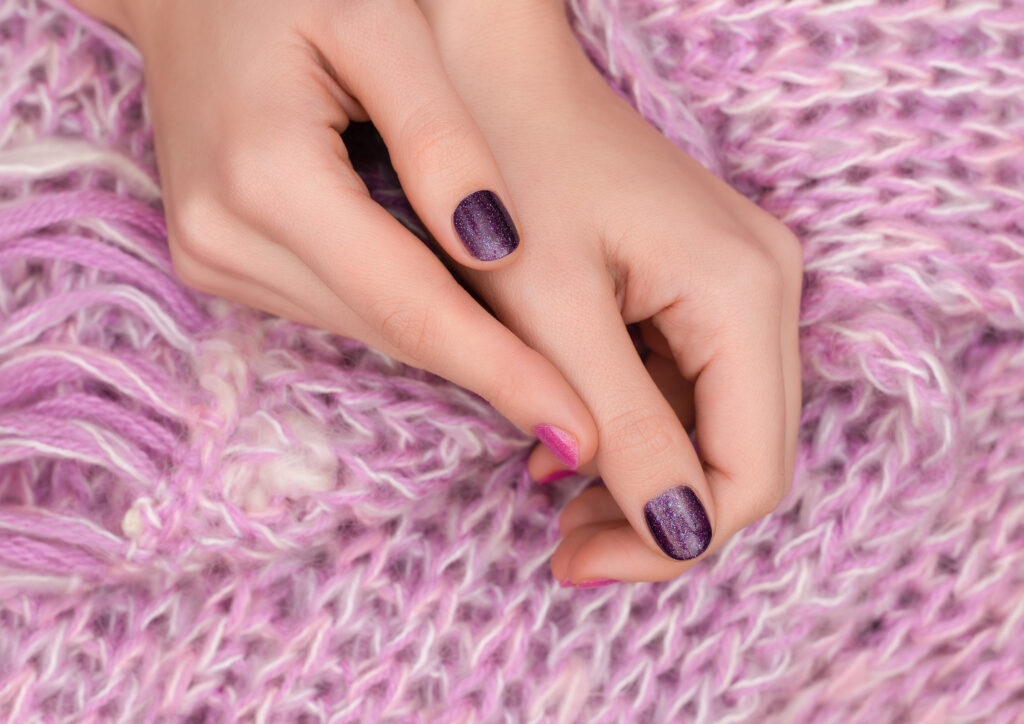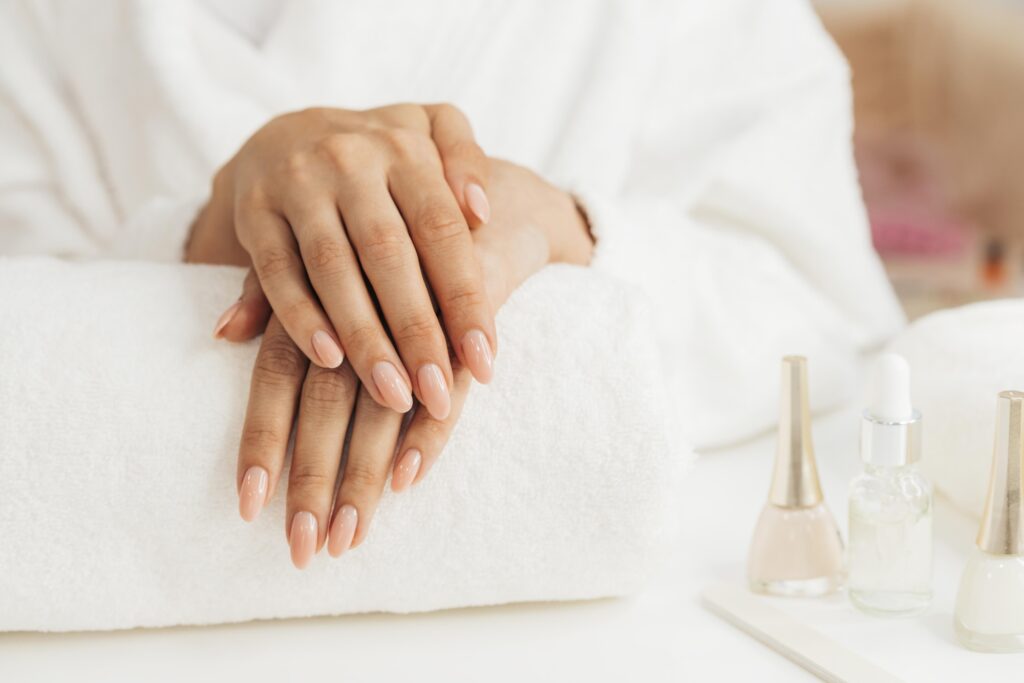Which One is Right for You?
When you want to improve the appearance and feel of your nails, it cannot be easy to choose between Gel vs Acrylic Nails. These nail enhancement methods are popular at salons worldwide and have distinct benefits. However, selecting the right one to suit your needs requires thorough knowledge.

This article provides comprehensive information on the advantages and disadvantages of gel and acrylic nails, the method of applying them, their durability, and their appearance. Ultimately, you’ll have all the information you need to make an informed choice based on your lifestyle, preferences, and nail health.
Introduction to Gel vs Acrylic Nails.
First, let’s start with the basics.
What Are Gel Nails?
Gel nails are made using a gel-like substance LED light. The gel hardens and adheres to your natural nail, offering a glossy, natural finish. They feel lightweight and are ideal if you’re looking for a polished, more natural look. Wondering which is better for you Gel vs Acrylic Nails? Let’s compare durability, cost, and maintenance to help you decide.

What Are Acrylic Nails?
Acrylic nails are created by combining a liquid monomer with a powder polymer to form a pliable material that can be shaped and moulded. Once shaped, the acrylic hardens as it air-dries, creating a durable surface. Acrylic nails are known for their versatility, as they can be easily customized to specific shapes and lengths.
Popularity of Nail Enhancements
Nail enhancements, like gel and acrylic nails, have become increasingly popular in beauty. Instagram, TikTok, and Pinterest have contributed to nail design trends ranging from classic French tips to vibrant, artistic nail art. Whether you’re looking for minimalism or bold, statement nails, these methods cater to every style.
Key Differences Between Gel vs Acrylic Nails.
While both methods are popular, gel and acrylic nails differ in several significant ways. which one is better for you Gel vs Acrylic Nails?


1. Application Process
Gel Nails: Gel nails are applied in multiple layers. Each layer is cured under a UV or LED light to harden and set the gel. The process includes using a base coat, colour, and a top coat.
Acrylic Nails: Acrylic nails involve mixing liquid monomer with powder polymer to create a paste. This is then applied to the nails, shaped, and left to air-dry without curing lights.
2. Appearance
Gel Nails: Known for their natural, glossy finish, gel nails tend to look smoother and lighter on the nails.
Acrylic Nails: Acrylic nails are thicker, making them great for bold, dramatic nail art or significant length, but they may appear less natural.
3. Durability
Gel Nails: Gel nails are flexible, making them less prone to breaks but more susceptible to chipping.
Acrylic Nails: These are not just nails, they are a statement of durability. They are extremely hard and can withstand a lot, but remember, they can crack or lift if not maintained correctly.
4. Maintenance
Gel Nails: To maintain their stunning look, these require your attention every 2–3 weeks for regular fills. Remember, UV/LED light is necessary for curing, so be sure to plan your maintenance accordingly.
Acrylic Nails: Acrylic nails also require filling every 2–3 weeks. This process involves filling in the gap that appears as your natural nails grow, ensuring a seamless and polished look. Additionally, maintaining their shape involves regular filing.
Pros and Cons of Gel Nails
Pros: Natural look and feel.
- It is less damaging to natural nails when appropriately removed.
- Glossy finish without needing a top coat.
Cons:
- Less durable and more prone to chipping compared to acrylic nails.
- Requires UV/LED light, which has raised some concerns due to limited exposure to UV rays.
- Typically more expensive than acrylic nails.
Pros and Cons of Acrylic Nails
Pros:
- Extremely durable and long-lasting.
- Easily shaped and extended to dramatic lengths.
- It is usually more affordable than gel nails.
Cons:
- Thicker and less natural-looking, which might not suit everyone’s preferences.
- Improper application or removal can damage natural nails.
- A strong odour from the monomer liquid was present during application.
Application and Removal Process
Gel Nails
Application: A base coat is applied, followed by coloured gel polish and a top coat. Each layer is cured under a UV/LED light to harden.
Removal: Gel nails are soaked in acetone or carefully filed off to prevent damage.
Acrylic Nails
Application: A mix of liquid monomer and powder polymer is applied to your nails, shaped as desired, and left to harden naturally.
Removal: Acrylic nails are soaked in acetone or professionally filed down.
Cost Comparison
- Gel Nails: On average, gel nails are more expensive due to the materials required and the UV/LED curing process.
- Acrylic Nails: Acrylics are generally more affordable during the initial application, but they may require more frequent maintenance to keep them looking fresh.
Which is Better for Your Nails?
Ultimately, the best choice depends on your personal preferences and lifestyle. Here are some considerations which is better for you Gel vs Acrylic Nails? Let’s compare durability, cost, and maintenance to help you decide.
Lifestyle and Activities
If you use your hands often (e.g., for typing or working with equipment), acrylic nails may suit you better due to their durability. However, gel nails may be a better option if you prefer a lighter, natural look.

Desired Look
Gel nails are ideal for a natural, glossy appearance. Acrylic nails can deliver a bold, customizable style with significant length.
Budget and Maintenance
Although gel nails are often more expensive up front, if you’re careful, they may require less repair. Acrylic nails are budget-friendly initially but could cost more in the long run if frequent maintenance is needed.
Nail Health
If your natural nails are thin or prone to damage, opt for gel nails and have them removed by a professional to minimize harm.

Alternatives to Gel and Acrylic Nails
Not ready to commit to gel or acrylic nails? Try these options instead:
- Dip Powder Nails: Offer durability and a natural look without requiring UV light.
- Press-On Nails: Affordable and easy to apply, perfect for temporary enhancements.
- Natural Nail Care: Rock your natural nails with good-quality clear polish or nourishing treatments.
Choose What’s Best for Your Nails
Gel vs Acrylic Nails is the perfact combation of nails. Whether you prefer the flexibility and gloss of gel nails or the strength and drama of acrylic nails, understanding their key differences ensures you pick what suits you best. Don’t forget to consider alternatives like dip powders or press-on if you want something even lower-maintenance. which is better for you Gel vs Acrylic Nails? Let’s compare durability, cost, and maintenance to help you decide
Whatever you choose, always prioritize nail health and seek professional assistance for application and removal to avoid damage. If you’re still unsure, book an appointment at your salon and ask your technician for recommendations based on your lifestyle and nail type. Happy styling!
FAQ
ask us
anything
How to remove gel nail polish safely at home?
Soak a cotton pad in acetone, place it on your nail, wrap with aluminum foil, and wait 10-15 minutes. Gently scrape off the softened polish with a cuticle pusher.
How to get gel nail polish off without acetone?
Buff the top layer of polish to break the seal, soak nails in warm, soapy water, then gently scrape off the gel. Note: This method takes longer and may not be as effective.
How to take off gel nail polish from toes?
Use the same acetone soak method, but secure cotton pads with toe separators or small clips to keep them in place during removal.
How to do gel nails at home like a professional?
Start with clean, buffed nails, apply a thin base coat, cure under a UV/LED lamp, then layer color polish and finish with a top coat curing each step properly.
How to make gel nails last longer without chipping?
Prep nails properly (push back cuticles, lightly buff, and use a dehydrator), apply thin layers, cap the free edge, and avoid prolonged water exposure.
Can you dry gel nail polish without a UV light?
No, gel polish requires UV or LED light to cure. Some “gel-like” polishes air-dry, but true gel polish needs a lamp for a long-lasting finish.
How to use builder gel on natural nails for extra strength?
After prepping nails, apply a thin layer of builder gel, cure under a lamp, then shape and buff for a smooth finish. It adds durability and prevents breaks.
Can gel nails damage your natural nails?
Improper removal (peeling or filing too harshly) can weaken nails. Always soak off gel polish correctly and moisturize nails with cuticle oil afterward.
How to treat an allergic reaction to gel nail polish?
Remove the polish immediately, apply hydrocortisone cream, and avoid products containing HEMA or methacrylates. If symptoms persist, see a dermatologist.
How much does a full set of gel or gel-acrylic nails cost?
Prices range from 30 to 80 depending on salon location, nail tech experience, and design complexity. Gel acrylic hybrids may cost more than standard gel manicures.

I made $100/day with this simple system
Done-for-you system, instant commissions, no tech skills needed.
Start today before the price rises: https://rb.gy/uxe0l2
If you wish to unsubscribe, please reply to this email.
I made $100/day with this simple system
Done-for-you system, instant commissions, no tech skills needed.
Start today before the price rises: https://rb.gy/uxe0l2
If you wish to unsubscribe, please reply to this email.